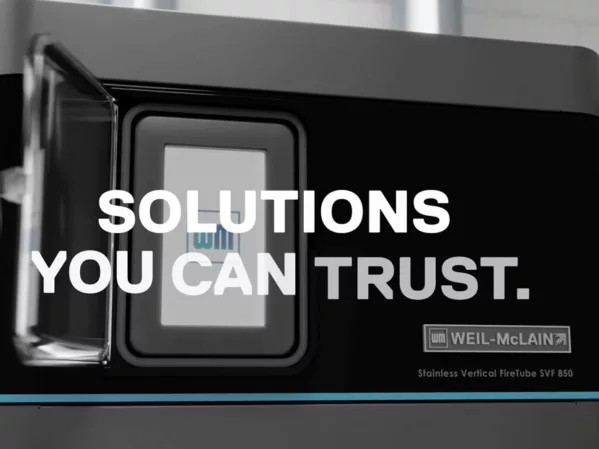Last month, the U.S. Water Alliance released “One Water Roadmap: The Sustainable Management of Life’s Most Essential Resource,” a 40-page guide for changing the way water is managed in the U.S. In it, the national nonprofit group, which was founded in 2008, makes the case for so-called “One Water” management.
“No matter who we are, where we live or what we do, water connects all of us,” the report stated. “When we embrace the belief that water in all its forms has value — water in our lakes, seas, rivers and streams, drinking water, wastewater and storm water — the full water life cycle can be optimized to build strong economies, vibrant communities and healthy environments.”
As water supplies become more strained and populations grow, communities are looking for new ways to develop and manage local water supplies and increase the resiliency of water infrastructure.
“Our country should rightfully be proud of our investment in the systems and infrastructure that provide so many residents and businesses with reliable water and wastewater service, while protecting public health and the environment,” the report said. “However, many of the traditional assumptions and approaches used over the past 200 years to design, build and operate our existing systems are insufficient to meet the 21st century challenges we face.”
The roadmap outlines a new approach to tackle the country’s biggest water challenges, including embracing regional, integrated planning for our water resources; diversifying water supplies and transforming wastewater into a renewable resource; creating new business models for water management; watershed-scale planning; developing a water safety net so water is accessible and affordable for all; sustainably managing groundwater, and many other strategies.
WaterHub
The report includes a number of case studies to highlight how and where utilities, community groups and businesses are making tangible progress in smarter water management.
For example, take a look at Emory University. Recycling up to 400,000 gallons of water per day, the university’s WaterHub project is a campus-scale water reclamation and reuse system that stands as a model for sustainable water management.
Serving Emory University’s main campus in Atlanta, the WaterHub “recycles” up to two-thirds of campus wastewater production — reducing the use of potable water by up to 40 percent.
The system takes its cues from Mother Nature and mimics natural methods of water treatment, such as those found in wetlands. Its natural, odor-free design helps the WaterHub blend seamlessly into the existing campus.
Located at two sites previously considered unmanageable, the primary treatment facility looks like a greenhouse.
Raw wastewater first enters tanks at the 2,200-square-foot facility, where it is hydroponically filtered and circulated throughout a dense curtain of real and synthetic plant roots suspended throughout a series of aerobic and anaerobic underground chambers. Thousands of microorganisms naturally digest the organic matter in the wastewater with minimal use of chemicals and energy.
The water then flows downhill to another 1,800-square-foot hydroponic installation with outdoor concrete planting beds, that continue the same microbial breakdown alongside a small tidal wetlands system demonstration project.
The cleaned wastewater is used as process make-up water in Emory’s steam and chiller plants and for toilet-flushing in some residence halls. The system will reduce Emory’s draw of water from Atlanta’s municipal water supply by up to 146 million gallons of water annually. The WaterHub also includes a 50,000-gallon emergency water reserve, which will allow Emory’s heating and cooling systems to function for an average of seven hours, depending on seasonal operating demands, in the event of any disruption in water availability.
“In addition to its functional use, the WaterHub is designed as a living, learning laboratory to enhance the university’s academic environment. With built-in lab space and easy access ports for water quality testing, the facility enables research in a number of disciplines and is used as an immersion learning tool to enhance curriculum,” the report added.
Since its commissioning in May 2015, the WaterHub at Emory has displaced more than 90 million gallons of potable water with recycled wastewater and has offered numerous economic, environmental and social benefits to the University and broader community. The WaterHub is expected to save tens of millions of dollars over the coming two decades.
“And in a time when budgets are on the decline for capital projects across the country and returns on investment are of paramount importance, this ambitious undertaking was constructed at no capital expense to the University under an innovative Water Purchase Agreement with Sustainable Water, a provider of water reclamation technologies, which developed the WaterHub,” the report added. “Water savings produced by the project are used to pay off the cost of the facility over the course of a 20-year contract.”
Silo-busting
So what’s holding back the progress of One Water? According to the Alliance, it’s the fragmented approach that’s become the status quo to managing water resources.
“Regulatory, financial and governance structures have put water into separately managed silos for drinking water, wastewater and storm water,” the report said.
These silos have long been reinforced at every level of government — from the Clean Water Act and Safe Drinking Water Act at the federal level, to how water rights and regulation are managed at the state level, to the disjointed nature of how local utilities and city agencies are organized.
“In addition, water resources are influenced by agricultural, industry and ecosystem management — often in ways that are separate from the decisions made by water utilities and community actors within the same watersheds,” the report added.
Solving today’s water problems requires breaking down barriers not only within the water industry, but also among all the other stakeholders who influence, and are influenced by, the management of water resources.
“These approaches exemplify the view that all water has value and should be managed in a sustainable, inclusive, integrated way,” the report said.
The movement toward One Water recognizes that no community can go it alone, and that what happens in one part of a watershed impacts another.
The idea of an integrated systems approach to water is not new. Its full-scale implementation, however, has yet to be realized.
“All around the country we are seeing silo-busting examples of integrated and inclusive approaches to water resource management,” the report concludes. “These approaches exemplify the view that all water has value and should be managed in a sustainable, inclusive, integrated way. And while our focus is water, our goals are thriving local economies, community vitality and healthy ecosystems.”




